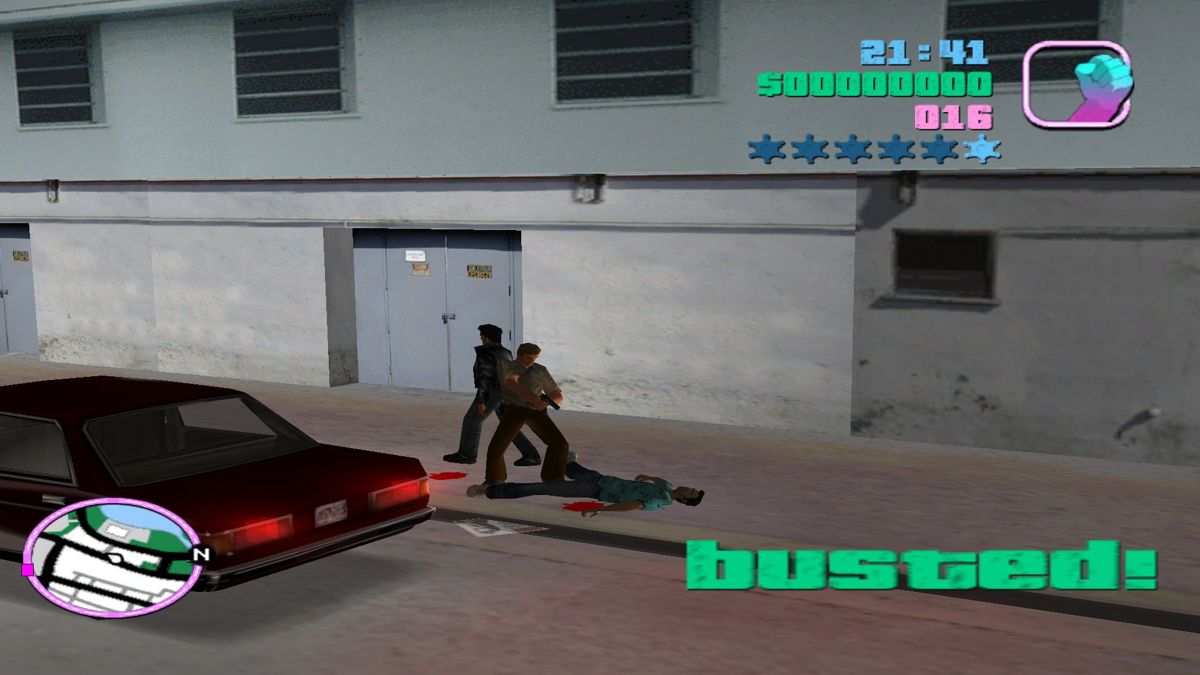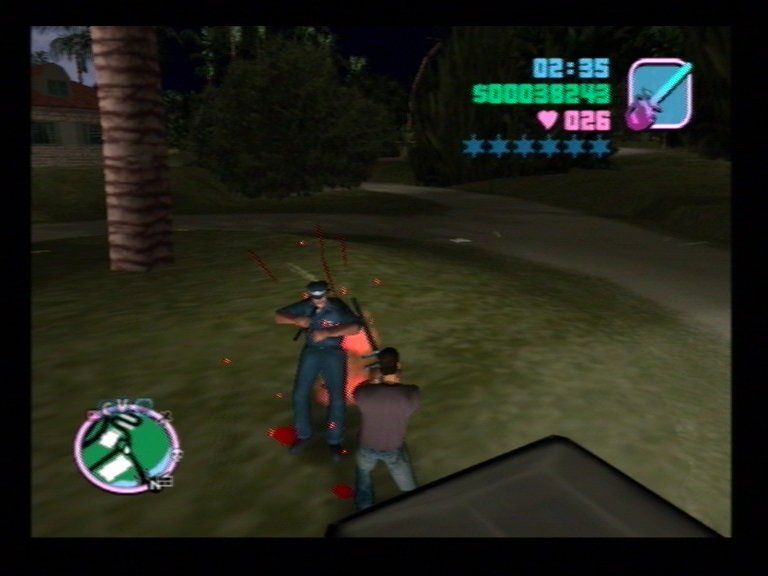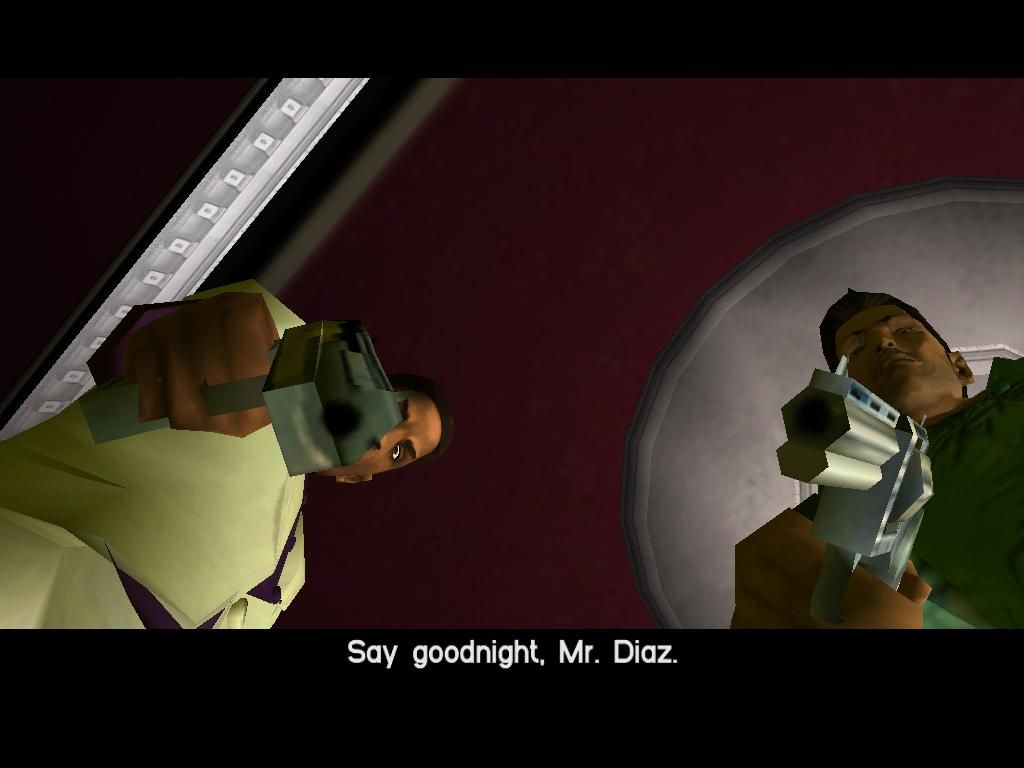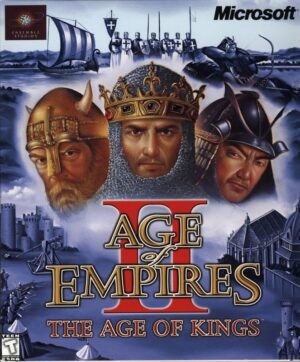Retro Replay Review
Gameplay
Grand Theft Auto: Vice City refines the free-roaming driving and action mechanics of its predecessor while injecting a healthy dose of 1980s flair. From the moment you seize control of Tommy Vercetti, you’re granted access to an expansive cityscape that feels alive—from the palm-lined avenues to the neon-bathed beachfront. Whether you’re weaving through traffic in a lowrider, roaring along the causeway on a Harley-esque motorcycle, or cruising across the bay in a speedboat, the core driving mechanics are responsive and intuitive, striking a satisfying balance between arcade thrills and a touch of realistic weight.
(HEY YOU!! We hope you enjoy! We try not to run ads. So basically, this is a very expensive hobby running this site. Please consider joining us for updates, forums, and more. Network w/ us to make some cash or friends while retro gaming, and you can win some free retro games for posting. Okay, carry on 👍)
Vice City doesn’t stop at wheels alone. The introduction of motorcycles adds a layer of risk and reward—leaning into tight corners, balancing throttle and brake, and feeling every bump in the road. Take to the skies in small planes and helicopters to scout out rival turf or pull off dramatic rooftop landings on skyscraper helipads. This newfound verticality opens up mission structures and exploration alike, ensuring that each play session feels fresh, whether you’re tearing up the streets or soaring above them.
On the combat front, Vice City offers an arsenal that spans classic firearms to new melee weapons like crowbars and riot batons. Gunplay is serviceable, with a lock-on system that simplifies targeting in hectic shootouts, while close-quarters brawls gain extra weight thanks to the variety of melee choices. Beyond the main storyline, a suite of side activities—driving taxis, performing vigilante duties, fighting fires, and even delivering patients to the hospital—adds depth and replayability. Each diversion feels unique and contributes to the sense that Vice City is a living, breathing playground for mayhem.
Graphics
At the time of its release, Vice City pushed the boundaries of console and PC visuals with a vibrant color palette and detailed 3D environments. The city pulses with life: neon signs flicker on Ocean Drive, palm trees sway near Art Deco hotels, and shimmering water effects reflect the setting sun. While textures may appear dated by modern standards, the overall art direction captures the 1980s Miami aesthetic with remarkable authenticity.
Character models and cutscenes benefit from improved animations over GTA III, giving Tommy and his associates more personality in every gesture and facial expression. Motion-captured sequences lend weight to key story moments and heighten the cinematic feel, making betrayals, gunfights, and high-speed chases all the more engaging. Environmental details—such as graffiti on alley walls, pedestrians in period-accurate attire, and traffic patterns that differ by neighborhood—further immerse you in the era.
The weather and lighting systems also deserve praise: dynamic day-night cycles transform Vice City’s mood from the harsh glare of midday to the moody glow of streetlights after dark. Rainstorms bring out reflections on wet pavement, while dusk and dawn deliver gradient skies that serve as perfect backdrops for your most dramatic escapes. Taken together, these graphical touches create a cohesive world ripe for exploration.
Story
Grand Theft Auto: Vice City thrusts you into the shoes of Tommy Vercetti, a hardened gangster fresh out of a fifteen-year prison stretch for refusing to inform on his comrades. His loyalty wins him a second chance under crime boss Sonny Forelli—only for a routine drug deal to go disastrously wrong. Bereft of cash and vendetta looming, Tommy’s quest for retribution ignites a brutal climb to the top of Vice City’s underworld.
From turf wars with Cuban gangs to tense showdowns with bikers, politicians, and crooked law enforcement, every mission advances Tommy’s personal narrative and showcases the city’s seedy underbelly. The tightly woven plot delves into themes of betrayal, ambition, and the price of loyalty. Memorable characters—like the icy-chic Ricardo Diaz, the flamboyant drug lord Umberto Robina, and the calculating Lance Vance—each play pivotal roles in Tommy’s ascent, delivering standout voice performances that anchor the game’s most dramatic moments.
What elevates Vice City’s storytelling is its commitment to 1980s authenticity. Pop culture references, period slang, and neon-splashed cutscenes evoke the era’s cinematic crime dramas. Side missions and optional interactions often reveal hidden facets of Tommy’s personality, adding emotional weight to the looming confrontation with Sonny. By the time the final showdown arrives, you’re fully invested in Tommy’s revenge-fueled odyssey.
Overall Experience
Grand Theft Auto: Vice City delivers a near-perfect fusion of open-world freedom, action-packed missions, and an unforgettable 1980s atmosphere. The varied gameplay—spanning high-speed chases, aerial stunts, and tense firefights—keeps the experience fresh from start to finish. Combined with a world teeming with side activities and secrets, it’s easy to lose dozens of hours exploring every nook and cranny of the city.
The ten radio stations, featuring over nine hours of era-defining music, offer a constantly rotating soundtrack that enhances immersion. From synth-pop and rock to early hip-hop and new wave, each track underscores the game’s mood and turns every drive into a mini time capsule. The seamless integration of music, visuals, and narrative creates a cohesive audio-visual feast that few games of its generation have matched.
Whether you’re revisiting Vice City for nostalgia or diving in for the first time, the game’s engaging storyline, robust mechanics, and stylized world design ensure it remains a high watermark in open-world gaming. For prospective buyers seeking a classic that balances story-driven missions with sandbox mayhem, Vice City stands as a shining exemplar of the genre.
 Retro Replay Retro Replay gaming reviews, news, emulation, geek stuff and more!
Retro Replay Retro Replay gaming reviews, news, emulation, geek stuff and more!








Reviews
There are no reviews yet.